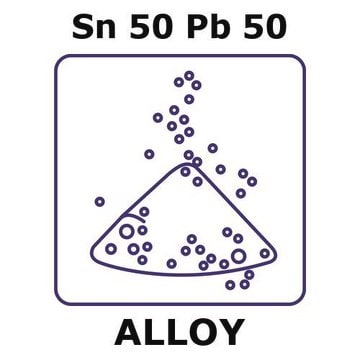GF99153085
Lead
rod, 200mm, diameter 50mm, 99.95%
Synonym(s):
Lead, PB007960
About This Item
Recommended Products
Assay
≥99.95%
form
rod
manufacturer/tradename
Goodfellow 991-530-85
resistivity
20.65 μΩ-cm
bp
1740 °C (lit.)
mp
327.4 °C (lit.)
SMILES string
[Pb]
InChI
1S/Pb
InChI key
WABPQHHGFIMREM-UHFFFAOYSA-N
General description
Legal Information
Signal Word
Danger
Hazard Statements
Precautionary Statements
Hazard Classifications
Aquatic Acute 1 - Aquatic Chronic 1 - Lact. - Repr. 1A - STOT RE 1 Oral
Target Organs
Central nervous system,Blood,Immune system,Kidney
Storage Class Code
6.1C - Combustible acute toxic Cat.3 / toxic compounds or compounds which causing chronic effects
WGK
nwg
Flash Point(F)
Not applicable
Flash Point(C)
Not applicable
Certificates of Analysis (COA)
Search for Certificates of Analysis (COA) by entering the products Lot/Batch Number. Lot and Batch Numbers can be found on a product’s label following the words ‘Lot’ or ‘Batch’.
Already Own This Product?
Find documentation for the products that you have recently purchased in the Document Library.
Our team of scientists has experience in all areas of research including Life Science, Material Science, Chemical Synthesis, Chromatography, Analytical and many others.
Contact Technical Service



